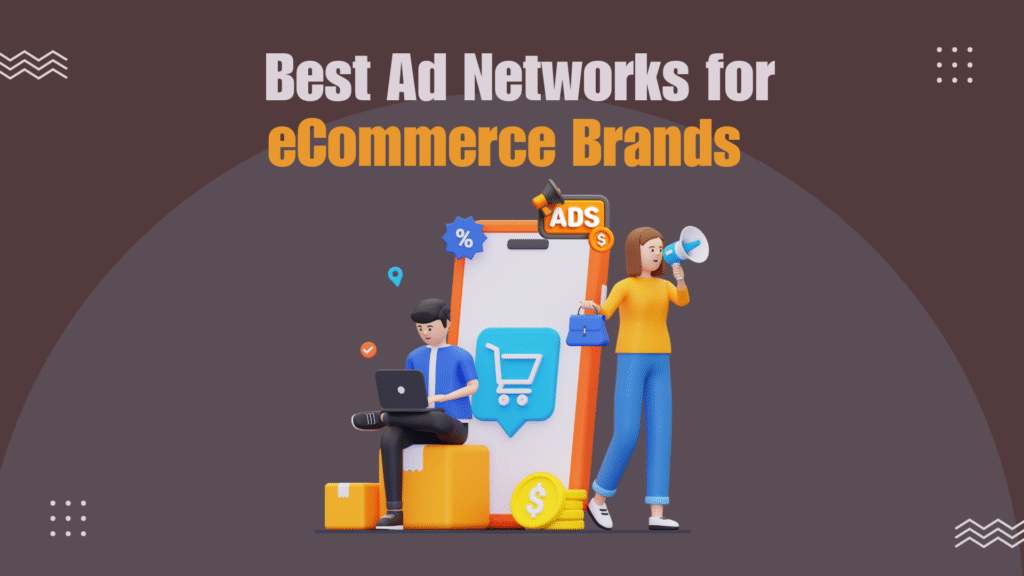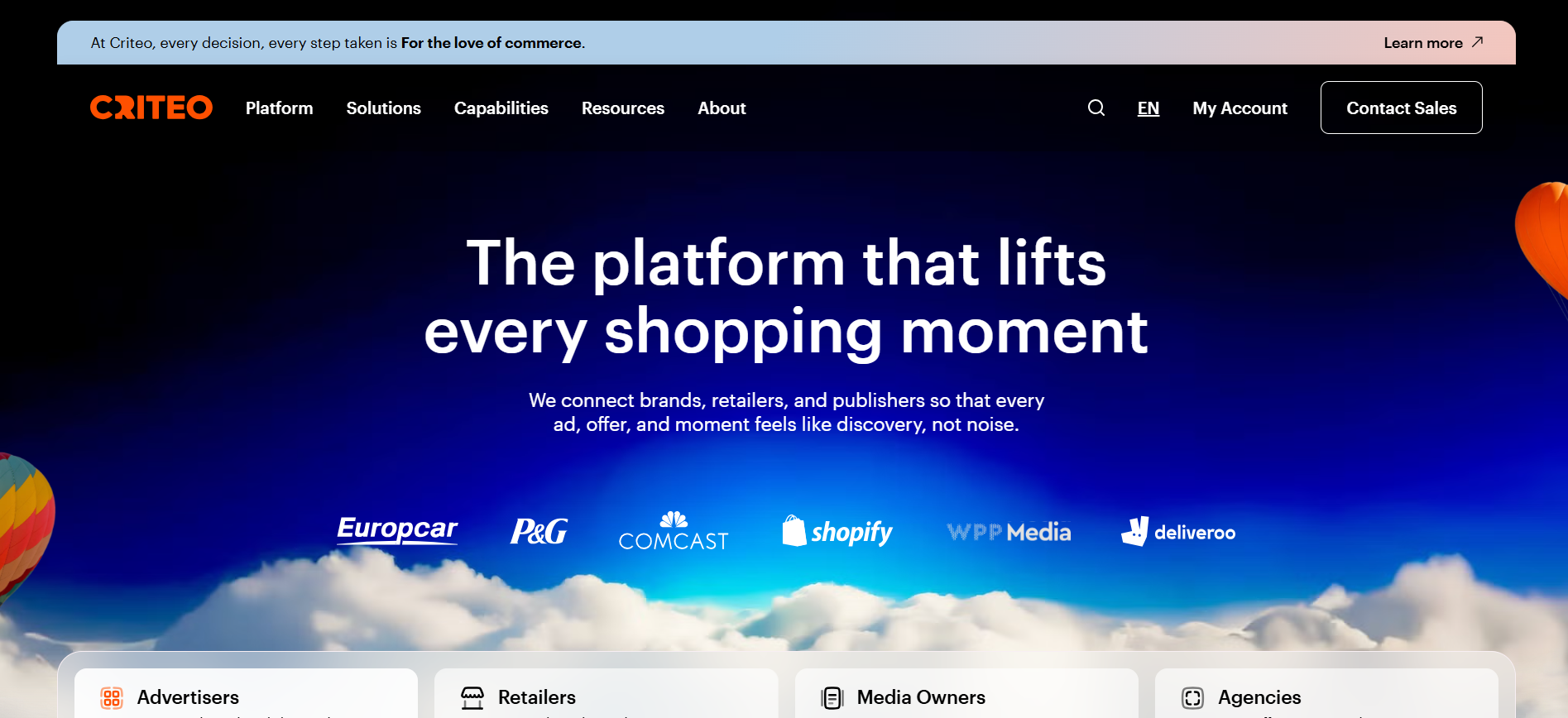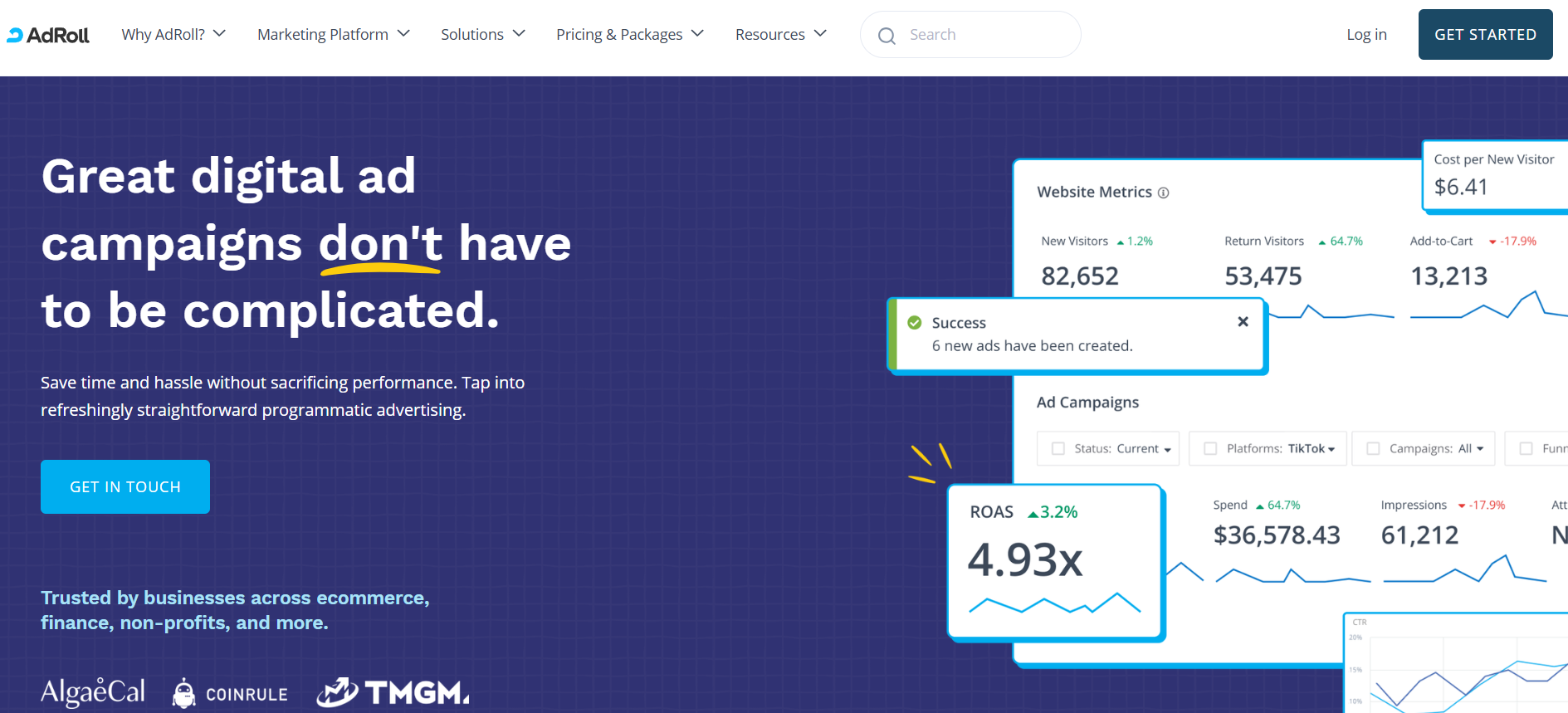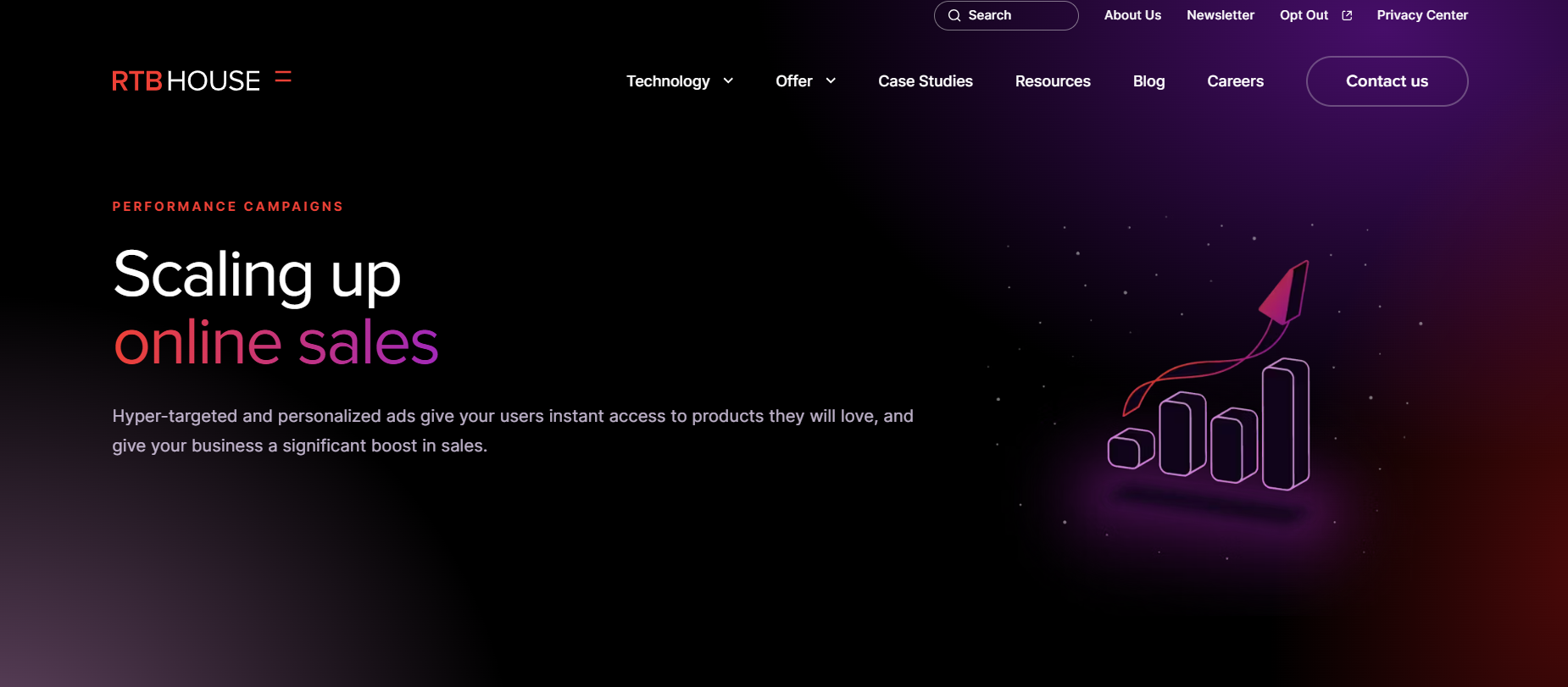In today’s competitive eCommerce landscape, driving sales and maximizing Return on Ad Spend (ROAS) is more important than ever. Many online retailers struggle to identify ad networks that not only increase traffic but also deliver high-converting, profitable results. With the rise of product-based monetization and affiliate marketing, leveraging the right advertising platforms has become essential for scaling revenue, reaching high-intent buyers, and maintaining visibility across search, social, and programmatic channels.
The best ad networks for eCommerce are designed to support product-driven campaigns with advanced features like dynamic retargeting, catalog integration, shoppable posts, and AI-powered placements. These tools allow brands to optimize campaigns, improve conversions, and maximize ROAS at every stage of the sales funnel. In this guide, we rank the top 15 ad networks for eCommerce in 2026, highlighting their ad formats, targeting capabilities, and conversion-focused features so you can confidently choose the platform that will drive the most growth for your online store.
What is eCommerce Advertising?
eCommerce advertising is paid promotion of physical or digital products through ad networks on web-based platforms. It targets product-based websites aiming to increase conversions and ROAS.
Brands use platforms like Google Shopping, Meta Ads, TikTok, Amazon Ads, and Criteo to deliver product listings, dynamic retargeting, carousel, video, or shoppable ads to users across search, social, and marketplace ecosystems.
Payment models include:
- Placement-based – Fixed fee per display slot.
- Impression-based (CPM) – Pay per 1,000 views.
- Click-based (CPC) – Pay when a user clicks.
- Conversion-based (CPA) – Pay when a purchase occurs.
Why eCommerce Advertising Is Crucial in 2026
eCommerce ad campaigns use performance metrics, product catalogs, and behavior signals to drive measurable growth for online sellers.
eCommerce advertising is vital in 2026 as global digital retail surpassed $4.1 trillion in 2024, with projections showing continued growth. Online shopping is now the primary purchase channel for most consumers.
Over 75% of shoppers begin with a Google search, making search and shopping ads essential for visibility. Social platforms like TikTok, Instagram, and Pinterest now influence product discovery and impulse buying.
Advertising helps brands:
- Target high-intent users.
- Retarget abandoned carts.
- Promote catalog-based products.
- Optimize ROAS with AI-driven delivery.
Without eCommerce advertising, product-based websites risk losing traffic, sales, and market share in an increasingly competitive space.
How to Use Paid Social Media Ads in Your eCommerce Campaigns
To effectively use paid social media ads in eCommerce, define clear goals before choosing platforms. Social ads can support multiple stages of the customer journey with targeted, data-driven strategies.
Key ways to use paid social ads:
- Retarget engaged users who viewed products but didn’t buy.
- Recover abandoned carts with personalized ad creatives.
- Drive seasonal traffic during key events like Black Friday or Cyber Monday.
- Expand to new markets by targeting users in specific regions or countries.
- Run A/B tests to compare offers, creatives, and messaging.
These tactics help increase conversions, reduce drop-offs, and improve ROAS across your eCommerce funnel.
Questions to Asked Before Choosing…
- What are the highest-ROAS ad networks for product-based websites?
- Which ad platforms support catalog-based product targeting?
- Do programmatic ad networks benefit eCommerce brands?
- Which ad networks allow dynamic retargeting for eCommerce?
- Are native shopping ad formats better for ROAS?
- How do Meta Advantage+ campaigns boost eCommerce ROAS?
15 Best Ad Networks for eCommerce Brands to Boost ROAS
- Google Ads – Best for targeting high-intent product searches across Google Search and Display Network.
- Google Shopping – Best for showcasing real-time product listings directly in Google’s Shopping tab.
- Bing Ads – Best for cost-effective product ad campaigns with lower CPC and Microsoft Search traffic.
- Facebook Ads – Best for retargeting users with personalized Dynamic Product Ads via catalog feeds.
- Instagram Ads – Best for visual eCommerce engagement through shoppable posts and Reels.
- YouTube Ads – Best for product storytelling using video ads across intent-rich audiences.
- Pinterest Ads – Best for product discovery among shoppers planning future purchases.
- TikTok Ads – Best for viral product promotion using short-form, high-conversion video content.
- Snapchat Ads – Best for reaching Gen Z buyers with AR-enabled product ads and Stories.
- Amazon Ads – Best for native product promotions within Amazon’s high-buying-intent ecosystem.
- eBay Ads – Best for boosting visibility of product listings inside the eBay marketplace.
- SmartyAds – Best for programmatic product campaigns with AI-driven audience targeting.
- Criteo – Best for dynamic retargeting and catalog-based ads focused on conversion optimization.
- AdRoll – Best for multichannel retargeting across display, social, and email for Shopify stores.
- RTB House – Best for deep learning-based retargeting that drives ROAS across high-value product campaigns.
#1. Google Ads – Best for Targeting High-Intent Product Searches
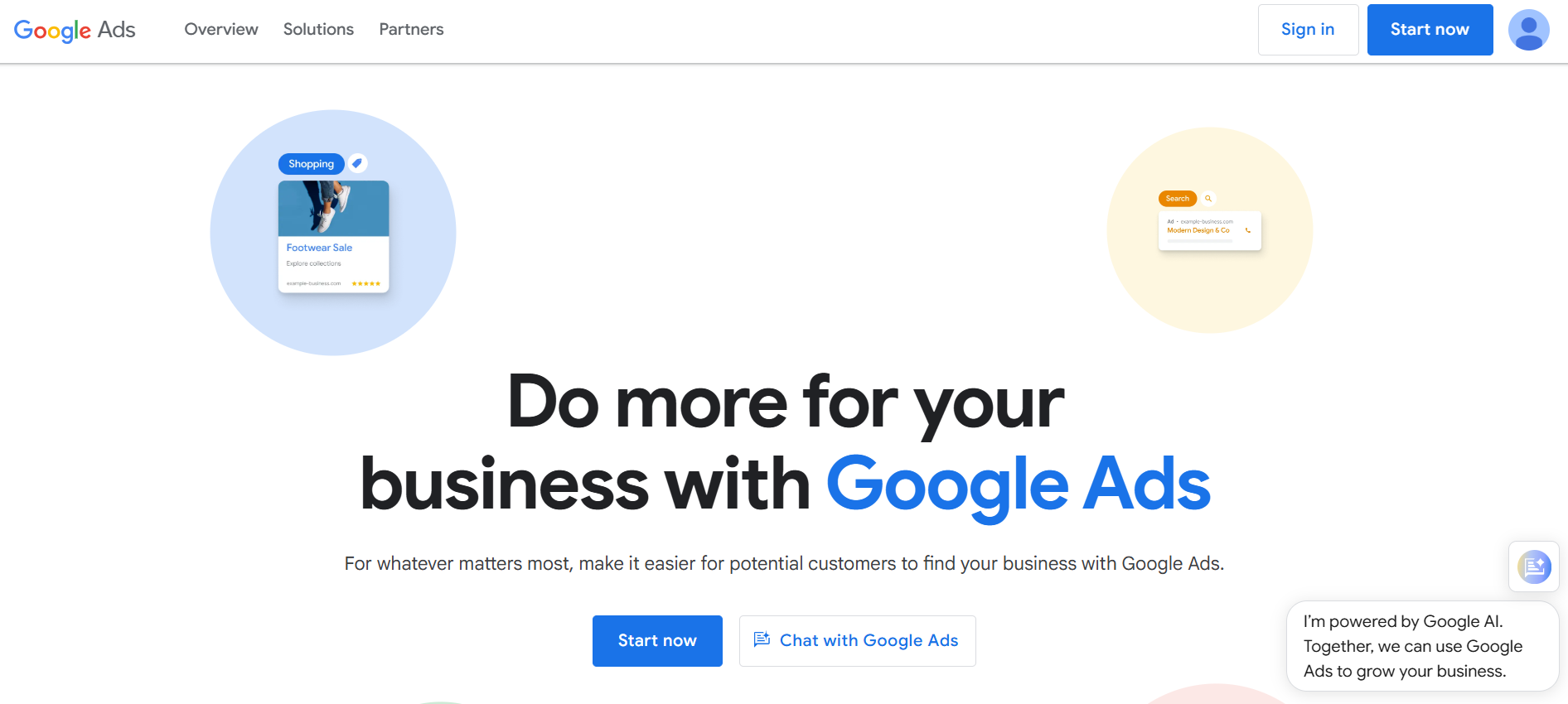
Google Ads is a cornerstone for eCommerce advertising due to its unmatched reach across Google Search, Display Network, and YouTube. For product-based websites, it enables merchants to capture high-intent users through keyword-based Search Ads and product-level Shopping campaigns. Smart Bidding and Performance Max campaigns help optimize ROAS using machine learning and real-time auction data.
Features
- Search, Display, YouTube, Shopping ad formats
- Smart Bidding with ROAS target
- Product feed integration via Google Merchant Center
- Broad audience targeting and remarketing tools
Reviews
Google Ads earns strong reviews for driving bottom-funnel performance and high conversion rates. However, complexity and CPC inflation are concerns for new advertisers.
Pricing Overview
CPC-based. Average CPC for Shopping is ~$0.66. Minimum budget depends on vertical and bidding strategy.
Pros
- High buyer intent
- Flexible campaign types
- Smart automation tools
Cons
- Steep learning curve
- Increasing CPCs in competitive niches
Final Verdict
Google Ads remains the most powerful and scalable option for eCommerce ROI due to its intent-first targeting and product feed integration.
#2. Google Shopping – Best for Showcasing Real-Time Product Listings
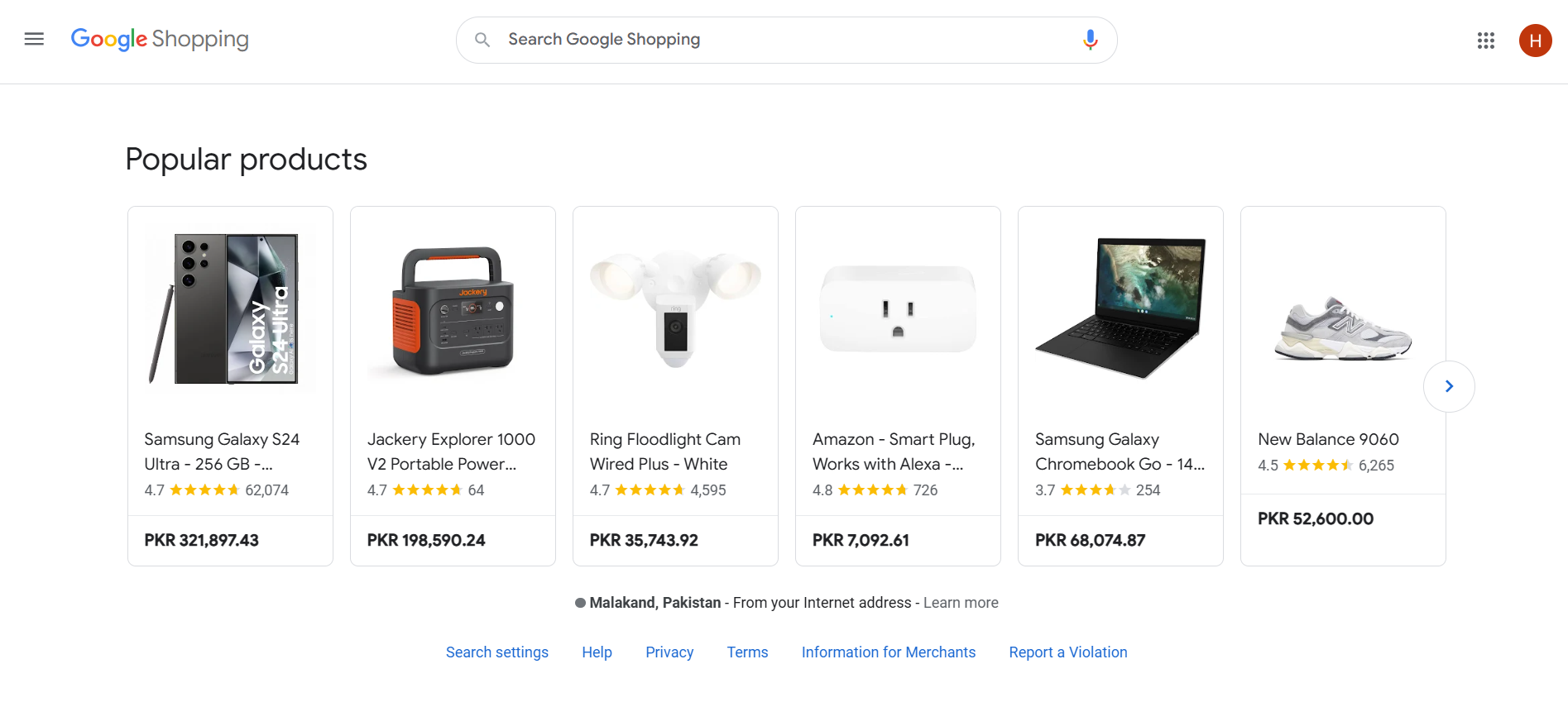
Google Shopping displays visual product ads directly in Google Search and the Shopping tab. It pulls product data from Google Merchant Center, allowing real-time updates of pricing, availability, and ratings. These listings target users during product comparison and high-intent search phases. With deep integration into Google Ads and Performance Max, it supports scalable catalog advertising. It’s especially valuable for driving clicks from ready-to-buy users.
Features
- Real-time product listings in Google SERPs
- Merchant Center sync for automated inventory updates
- Performance Max compatibility
- Product reviews and shipping info included
Reviews
Merchants value Google Shopping for ROI consistency and clear buyer intent. Product feed issues are common setup hurdles.
Pricing Overview
Operates on a CPC model via Google Ads. No direct cost for organic listings.
Pros
- Visual SERP real estate
- High conversion potential
- Syncs with Google Ads
Cons
- Requires accurate product feed
- Limited control over organic listings
Final Verdict
For product visibility and purchase-ready traffic, Google Shopping remains indispensable for any serious eCommerce operation.
#3. Bing Ads – Best for Cost-Effective Product Ad Campaigns
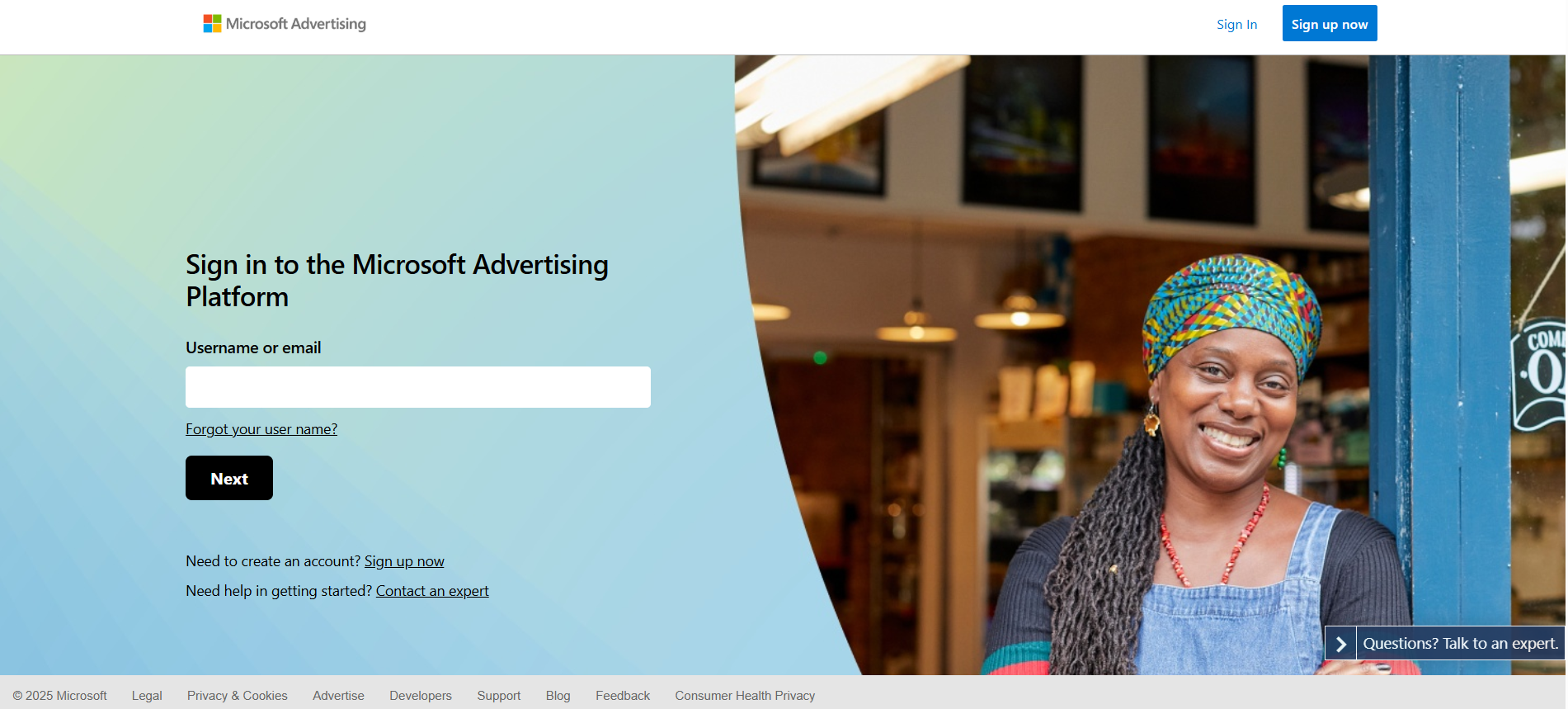
Bing Ads, now Microsoft Advertising, serves product-based ads across Bing, Yahoo, and AOL properties. It supports Microsoft Shopping Campaigns and allows Google Ads feed imports, reducing setup time for eCommerce sellers. The platform offers lower CPCs and high desktop conversion rates, making it a strong value play. Brands targeting older demographics or desktop-first buyers benefit the most. It’s widely used as a secondary channel for scaling ROAS.
Features
- Microsoft Shopping Campaigns
- Import feature from Google Ads
- Lower CPC with high ROI potential
- Integration with LinkedIn targeting
Reviews
Advertisers often praise Bing for its lower CPCs and strong desktop traffic. Volume is limited compared to Google.
Pricing Overview
CPC-based. CPCs are 30–50% lower than Google Ads on average.
Pros
- Budget-friendly CPC
- Easy feed import
- Valuable desktop traffic
Cons
- Lower traffic volume
- Limited audience diversity
Final Verdict
Bing Ads is a valuable secondary channel for cost-efficient reach and product-level targeting.
#4. Facebook Ads – Best for Personalized Dynamic Product Retargeting
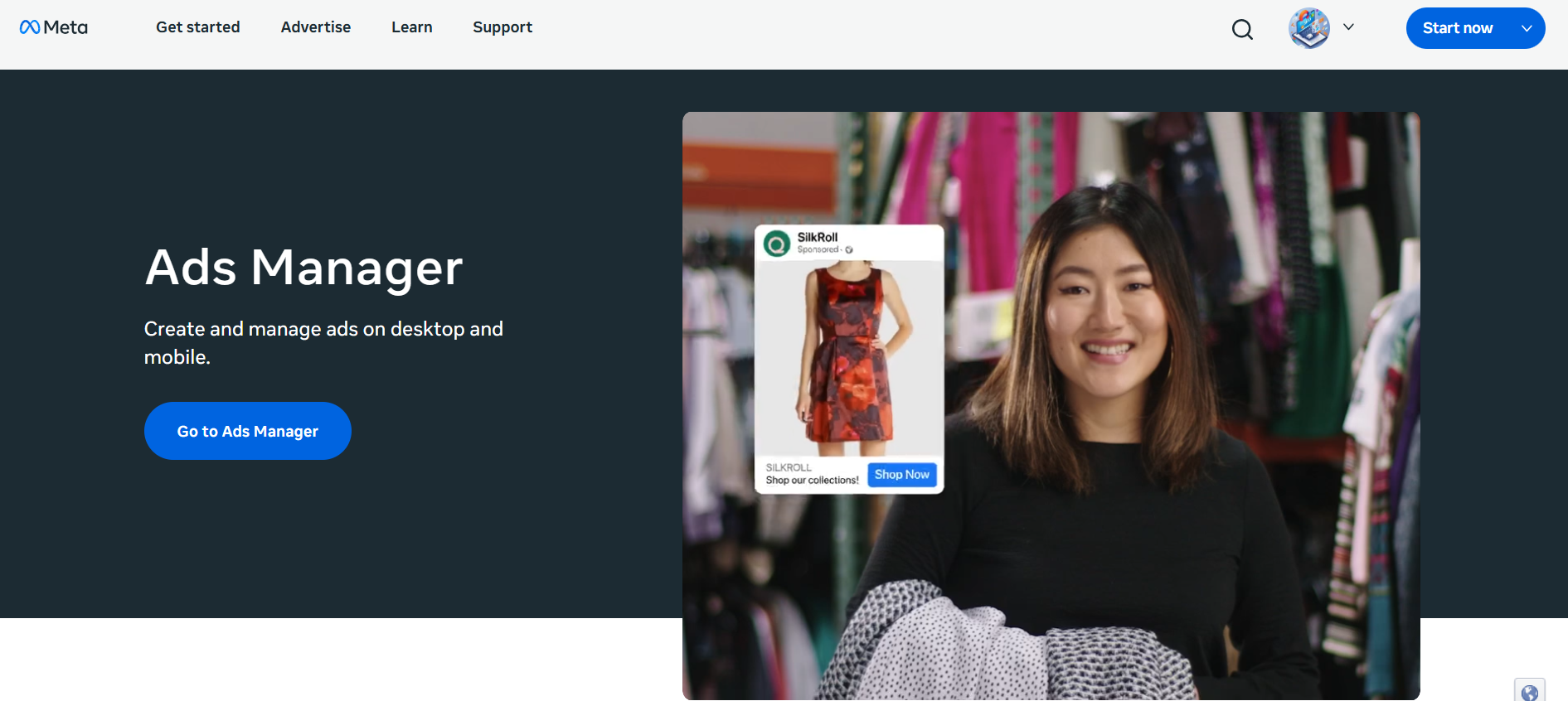
Facebook Ads allow eCommerce brands to retarget potential buyers with dynamic product ads synced to real-time catalogs. Powered by Meta’s machine learning, it segments audiences using interest, behavior, and pixel-based triggers. Campaigns can reach users across Facebook, Instagram, and Audience Network simultaneously. Its remarketing capabilities are ideal for abandoned cart recovery and upselling. Facebook Ads remain a key tool for mid-to-lower funnel eCommerce performance.
Features
- Dynamic Product Ads
- Advanced audience segmentation
- Integration with Meta Commerce Manager
- Cross-platform delivery (Facebook & Instagram)
Reviews
Advertisers consistently see strong ROAS from Facebook retargeting. iOS privacy changes have impacted tracking accuracy.
Pricing Overview
CPC or CPM model. Average CPC ranges from $0.50–$1.00 for eCommerce.
Pros
- Precision targeting
- Dynamic product automation
- Integration with Meta assets
Cons
- Pixel tracking limitations
- Competitive CPM in peak seasons
Final Verdict
Facebook Ads remains dominant for personalized product remarketing and multi-device conversion paths.
#5. Instagram Ads – Best for Visual Shopping and Product Discovery
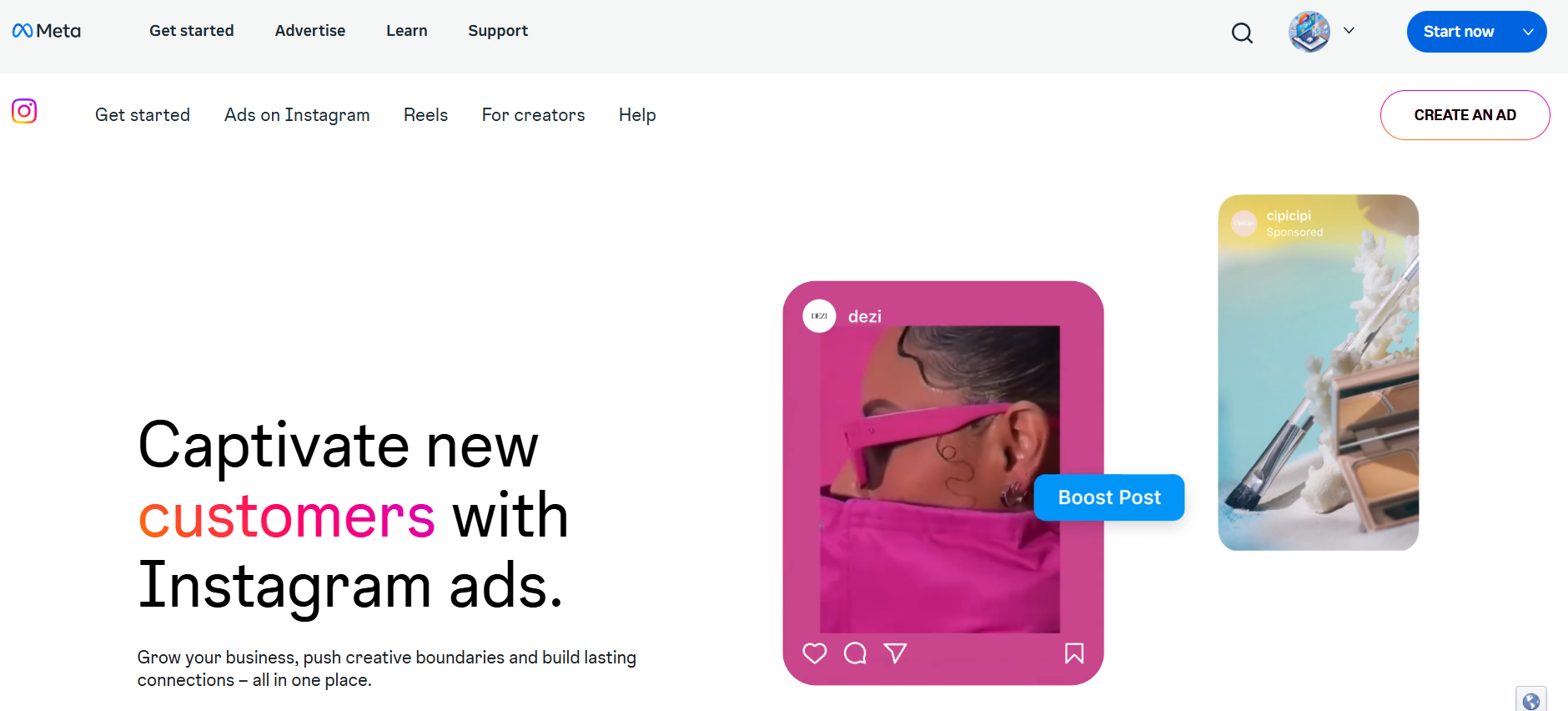
Instagram Ads are tailored for D2C eCommerce brands that rely on visual branding to drive sales. With formats like Shoppable Posts, Reels, and Stories, brands can embed product links directly into content. Users can explore, save, and purchase without leaving the app. Integrated with Meta Commerce Manager, campaigns can auto-sync with store inventories. It’s most effective for fashion, beauty, wellness, and lifestyle product categories.
Features
- Shoppable posts and product tags
- Reels ads with clickable CTAs
- Influencer integration and branded content
- Meta Commerce Manager support
Reviews
Instagram earns praise for aesthetic impact and product inspiration. Ad fatigue and short shelf life are common drawbacks.
Pricing Overview
CPM/CPC model. CPM ranges from $6–$10 on average.
Pros
- High engagement formats
- Integrated product shopping
- Visual-first ad delivery
Cons
- High creative demands
- Expensive in saturated niches
Final Verdict
For visually-driven brands, Instagram Ads offer unmatched engagement and seamless commerce tools.
#6. YouTube Ads – Best for Product Storytelling Using Video Ads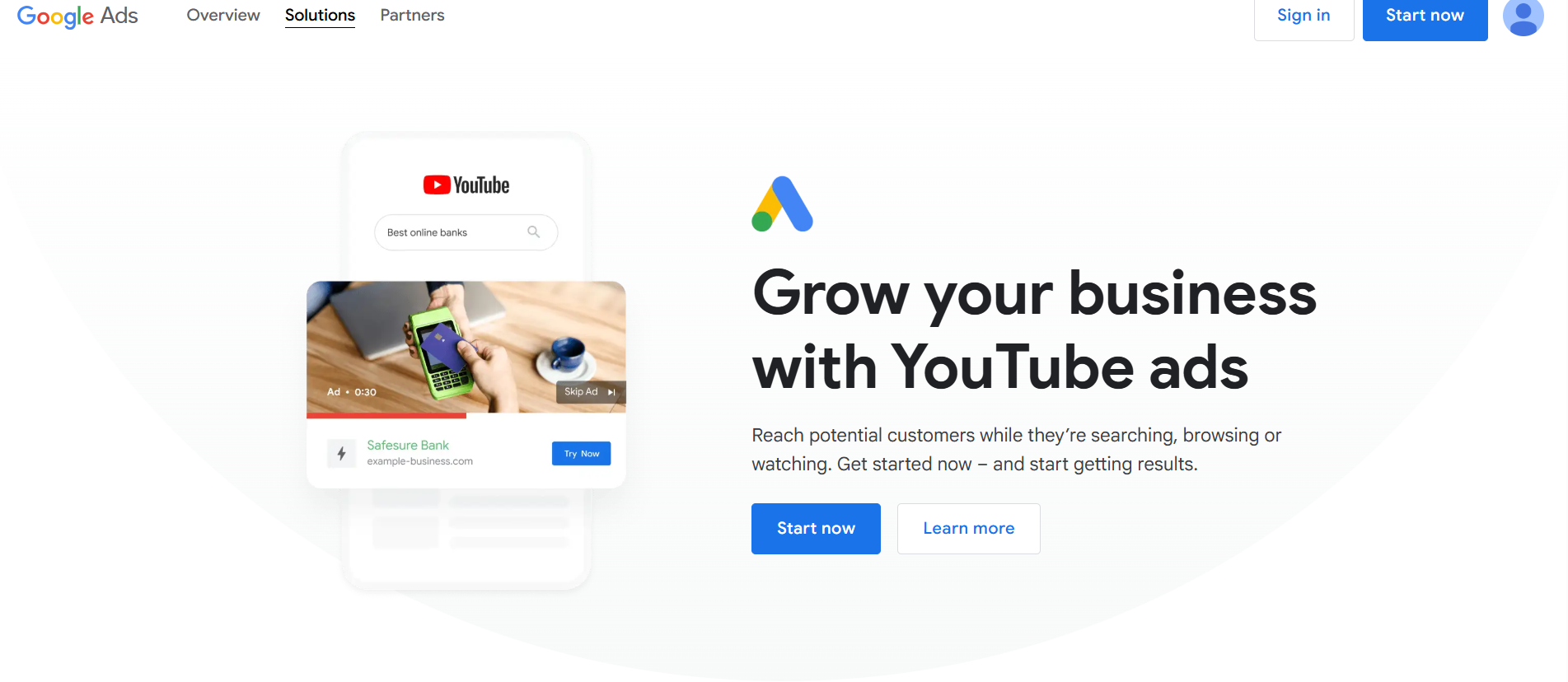
YouTube Ads allow eCommerce brands to deliver video ads across high-intent content and search behavior. With formats like TrueView, In-Stream, and Shopping video ads, YouTube enables brands to showcase product features and benefits through storytelling. Google Ads integration powers Performance Max and retargeting workflows. It’s particularly effective for driving mid-funnel interest and post-view conversions.
Features
- TrueView, Bumper, In-Feed, and In-Stream ads
- Google Ads and Shopping feed integration
- Advanced audience targeting via Google Signals
- Skippable and non-skippable video options
Reviews
Brands appreciate YouTube’s massive reach and storytelling flexibility. High video production costs can be a barrier for smaller stores.
Pricing Overview
CPV/CPM based. Typical CPV ranges from $0.02–$0.10; CPM averages $6–$12.
Pros
- Immersive ad experience
- High audience scale
- Supports product feed ads
Cons
- Creative cost is high
- Complex attribution
Final Verdict
YouTube Ads excel at mid-to-upper funnel awareness and converting product interest into traffic and sales.
#7. Pinterest Ads – Best for Product Discovery Among Future Shoppers
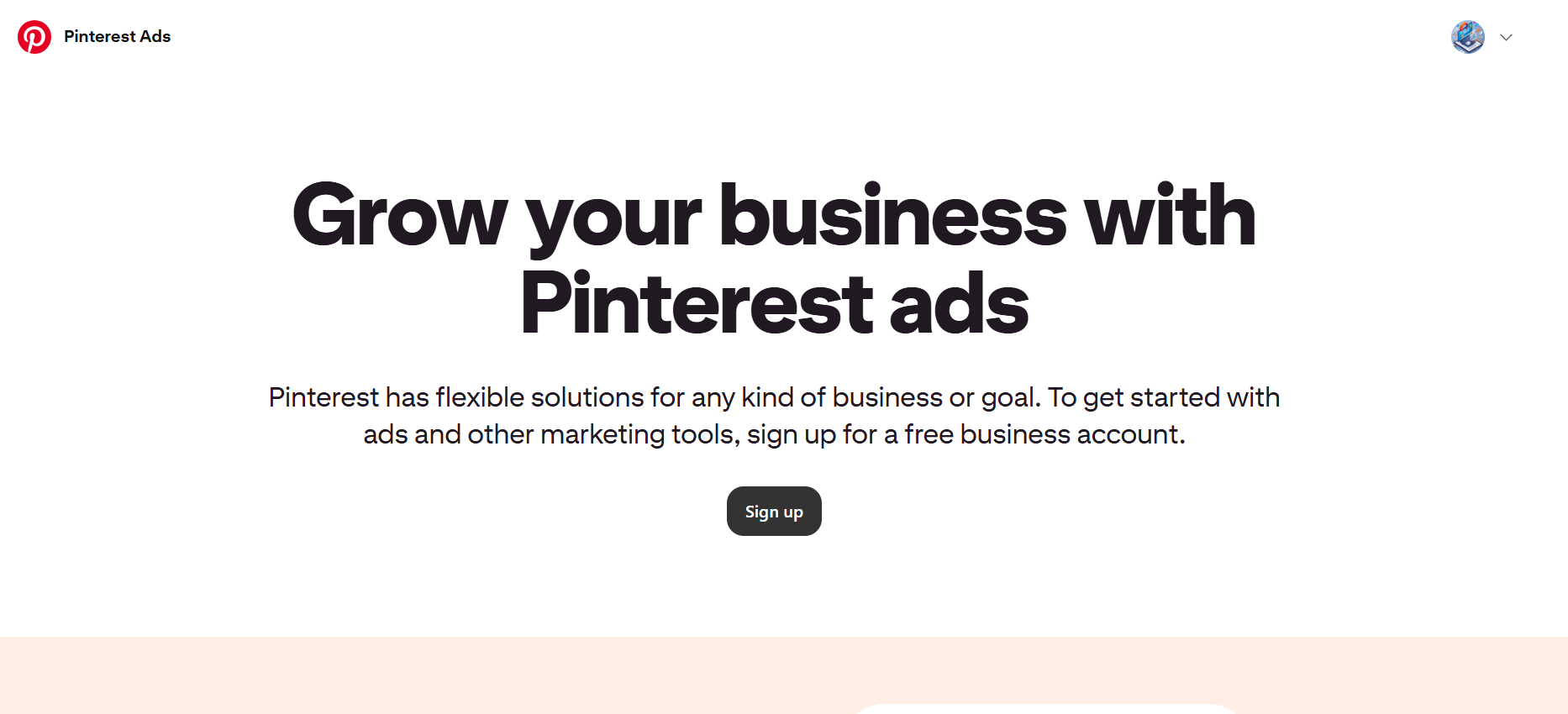
Pinterest Ads reach users who save and plan purchases in advance, making them ideal for product-based websites in fashion, home, and lifestyle niches. Promoted Pins and Catalog Ads align with inspiration-based search behavior. With automatic product tagging and carousel support, Pinterest drives qualified clicks from high-intent planners. It performs especially well for seasonal and evergreen eCommerce content.
Features
- Promoted Pins, Carousels, and Shopping Ads
- Keyword + interest-based targeting
- Catalog feed integration
- Conversion Insights via Pinterest Tag
Reviews
Advertisers praise Pinterest for ROAS consistency in niches like home decor and apparel. Weak B2B performance limits scope.
Pricing Overview
CPC and CPM available. CPC averages $0.10–$1.50 depending on vertical.
Pros
- Evergreen product reach
- High-quality buyer intent
- Visual-first experience
Cons
- Narrow vertical fit
- Limited remarketing scale
Final Verdict
Pinterest offers long-lasting engagement from planners who frequently convert after discovery.
#8. TikTok Ads – Best for Viral Product Promotion via Short Video
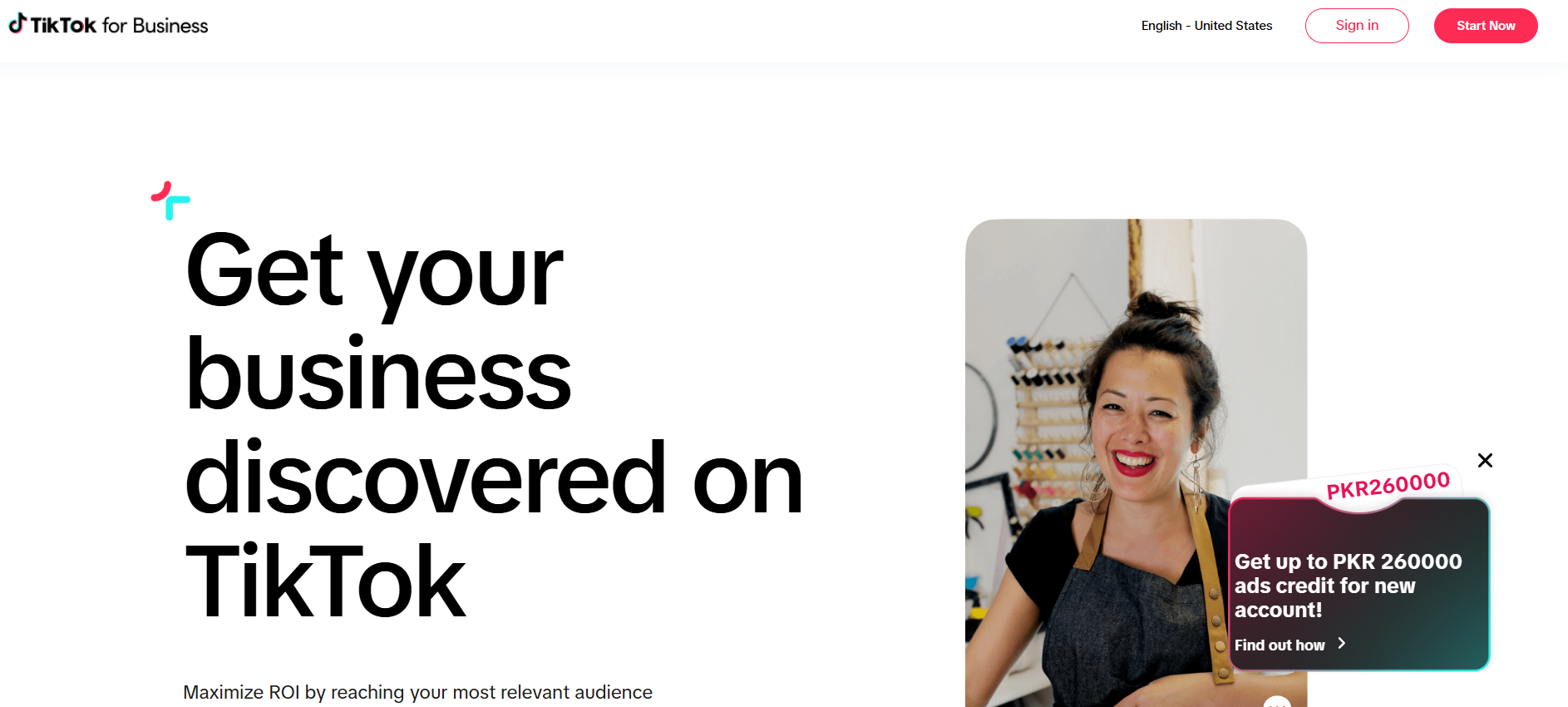
TikTok Ads let eCommerce brands go viral using short-form videos optimized for product storytelling. With ad formats like Spark Ads, Collection Ads, and Shopping Ads, brands can engage younger audiences in authentic, trend-driven ways. TikTok’s algorithm boosts discoverability, while catalog integration enables dynamic product ads. It’s best for fast-moving D2C brands.
Features
- Spark Ads, In-Feed, and Shopping Ads
- Shopify and BigCommerce integrations
- Smart catalog sync and product tagging
- TikTok Pixel and Advanced Events API
Reviews
Advertisers report fast ROAS gains from viral content. Creative fatigue and ad performance inconsistency are common risks.
Pricing Overview
CPM/CPV-based. CPMs range $5–$12. CPV campaigns start at $0.01.
Pros
- High engagement rates
- Native shopping experience
- Creative flexibility
Cons
- Short content shelf life
- Requires fresh, trending creatives
Final Verdict
TikTok is ideal for high-impact visual product campaigns focused on younger audiences and impulse buyers.
#9. Snapchat Ads – Best for Reaching Gen Z with AR and Story Ads
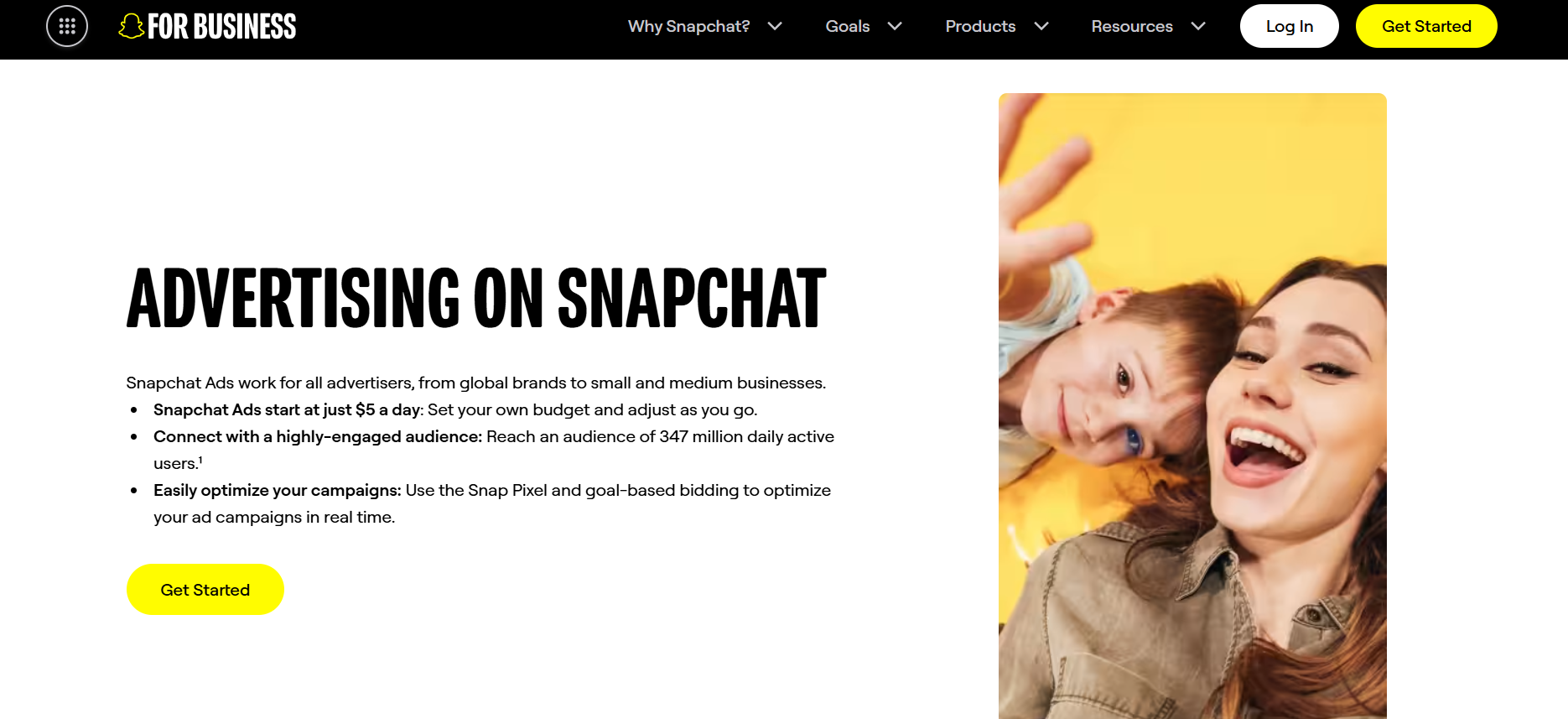
Snapchat Ads target Gen Z users through AR Lenses, Story Ads, and Dynamic Product Ads. Its Snap Pixel helps track performance across mobile product journeys. Brands use Snapchat to promote fashion, accessories, and lifestyle items in immersive ways. With real-time catalog sync, it enables dynamic ad delivery with minimal manual effort.
Features
- AR Lenses, Collection Ads, and Story formats
- Dynamic Product Ads with feed integration
- Advanced targeting and lookalike tools
- Snapchat Pixel for conversion tracking
Reviews
Snapchat works well for mobile-first campaigns but has limited traction in B2B or high-ticket verticals.
Pricing Overview
CPM/CPC. CPMs range from $3–$8. Minimum daily spend is $5.
Pros
- Strong Gen Z reach
- AR product engagement
- Catalog support
Cons
- Low desktop traffic
- Limited platform scale
Final Verdict
Snapchat is best for youth-focused eCommerce products using interactive and visual ad formats.
#10. Amazon Ads – Best for Native Product Promotions in Amazon Ecosystem
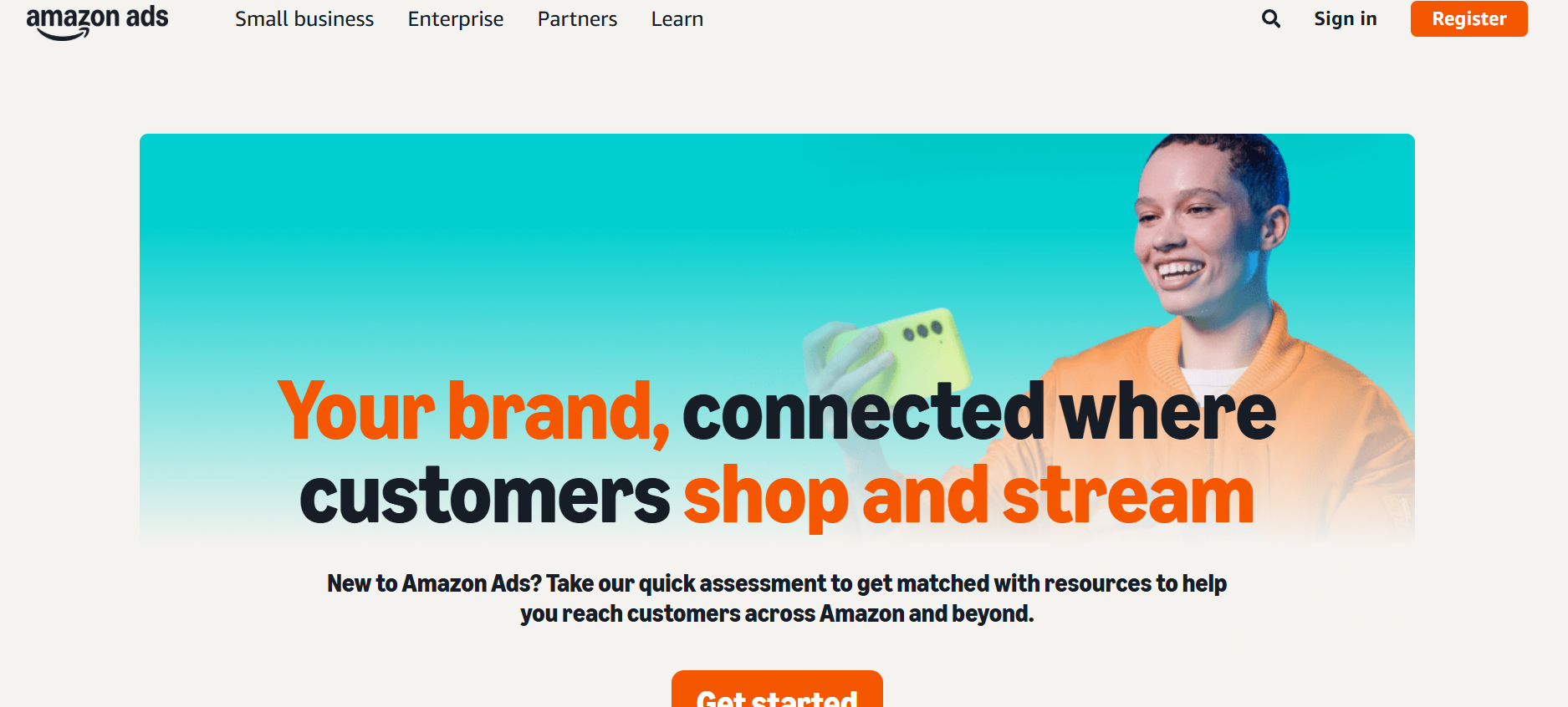
Amazon Ads allow brands to advertise directly inside the Amazon marketplace through Sponsored Products, Brands, and Display ads. eCommerce sellers can retarget users via Amazon DSP using real-time purchase signals. With keyword and ASIN-based targeting, Amazon Ads serve buyers at the point of purchase intent. It is crucial for any brand selling on Amazon.
Features
- Sponsored Products, Brands, and Display Ads
- ASIN-based targeting and keyword bidding
- Audience retargeting via Amazon DSP
- Campaign reporting with ACoS and ROAS metrics
Reviews
Sellers rate Amazon Ads as essential for product visibility and conversion. ROAS is often high but CPCs can spike during sales events.
Pricing Overview
CPC-based. CPCs vary by category, ranging from $0.40–$2.50.
Pros
- Buyer-intent targeting
- Native placement within product pages
- Robust ad analytics
Cons
- Platform-exclusive usage
- Expensive during peak periods
Final Verdict
Amazon Ads are mandatory for sellers seeking visibility, conversions, and optimized ROAS within the Amazon retail funnel.
#11. eBay Ads – Best for Boosting Visibility of Product Listings Inside the eBay Marketplace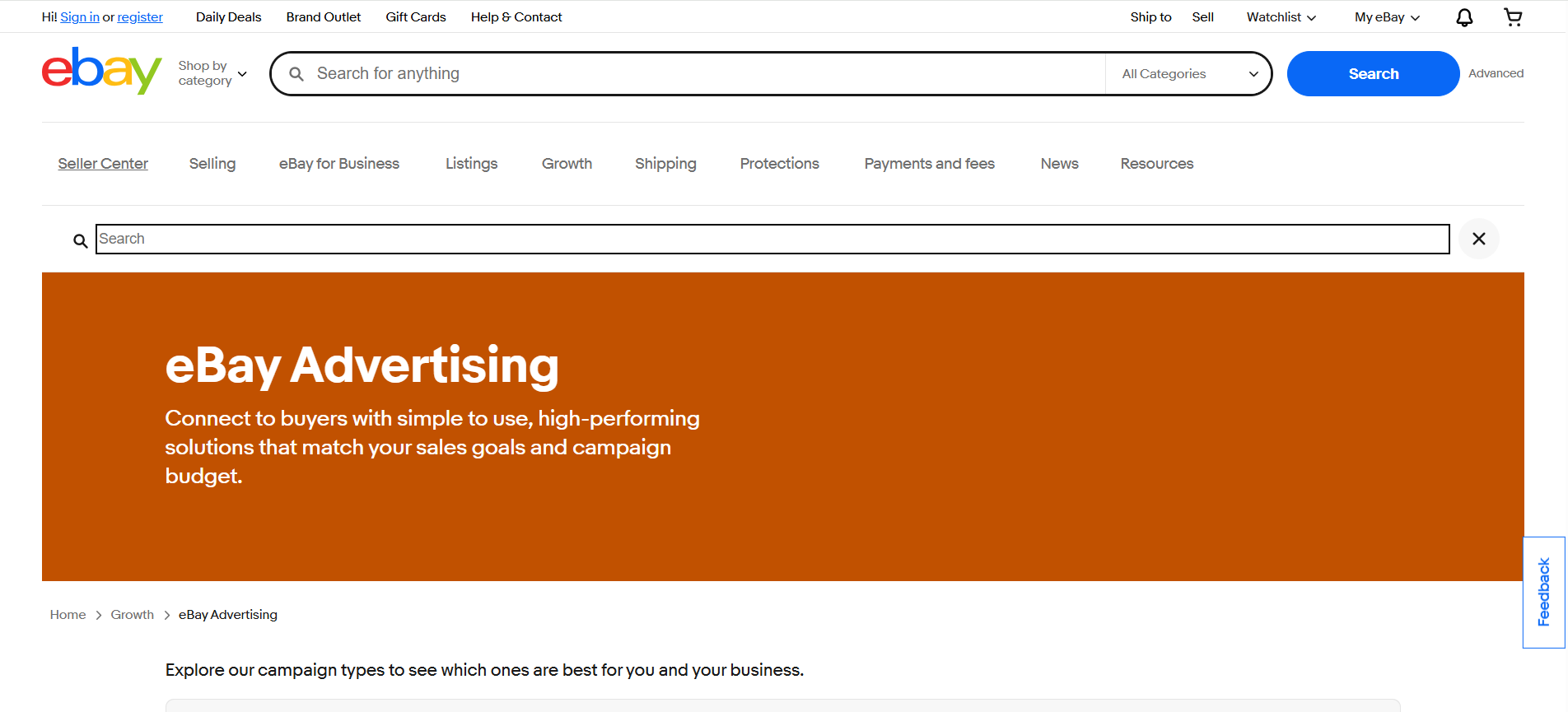
eBay Ads help sellers promote listings across eBay’s search results, category pages, and product pages. Using Promoted Listings Standard and Advanced CPC formats, sellers can gain more impressions and clicks within a competitive product environment. Ad campaigns are tied directly to inventory, with real-time performance tracking. eBay Ads are especially effective for sellers looking to stand out in a crowded marketplace. This platform works best for product-heavy catalogs with strong price positioning.
Features
- Promoted Listings Standard and Advanced (CPC)
- Native placement within eBay platform
- Inventory-level ad targeting
- Performance dashboard with impressions, clicks, and sales
Reviews
eBay Ads are praised for ease of use and incremental sales boost. Reviewers note that performance varies based on listing quality and pricing.
Pricing Overview
No upfront fee for Promoted Listings Standard; pay only for sales. CPC model applies to Advanced campaigns.
Pros
- Native integration
- Performance-based billing
- Easy setup for sellers
Cons
- Limited audience scope
- Highly competitive ad space
Final Verdict
For sellers on eBay, this ad platform provides essential visibility and traffic at flexible cost structures.
#12. SmartyAds – Best for Programmatic Product Campaigns with AI-Driven Audience Targeting
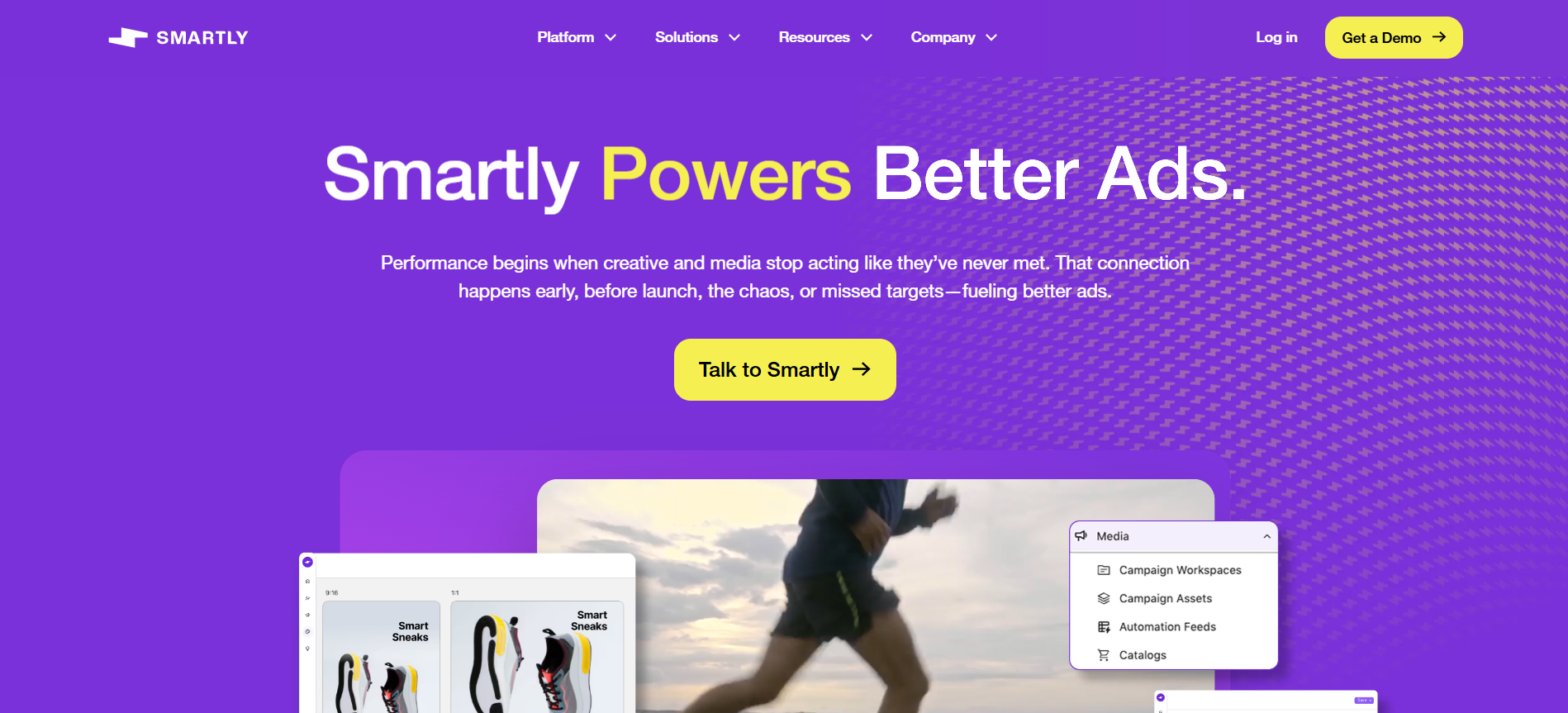
SmartyAds is a full-stack programmatic advertising platform that enables eCommerce brands to run dynamic product ads across web, mobile, CTV, and in-app environments. With its demand-side platform (DSP), SmartyAds allows real-time bidding and precise audience segmentation using AI. It integrates with DMPs and supports product-level retargeting for abandoned cart and upsell strategies. SmartyAds is suitable for brands scaling beyond search and social channels.
Features
- Programmatic DSP with RTB support
- Omnichannel reach (web, mobile, in-app, CTV)
- DMP and data-layer integrations
- AI-based targeting and retargeting
Reviews
Advertisers value its global reach and automation tools. Some users cite a learning curve and need for managed support.
Pricing Overview
Custom CPM-based pricing depending on formats and targeting layers. No fixed subscription fee.
Pros
- Broad ad inventory
- AI-driven audience tools
- Cross-device delivery
Cons
- Requires setup expertise
- Less beginner-friendly
Final Verdict
SmartyAds brings high automation and targeting precision to product-based brands expanding programmatic presence.
